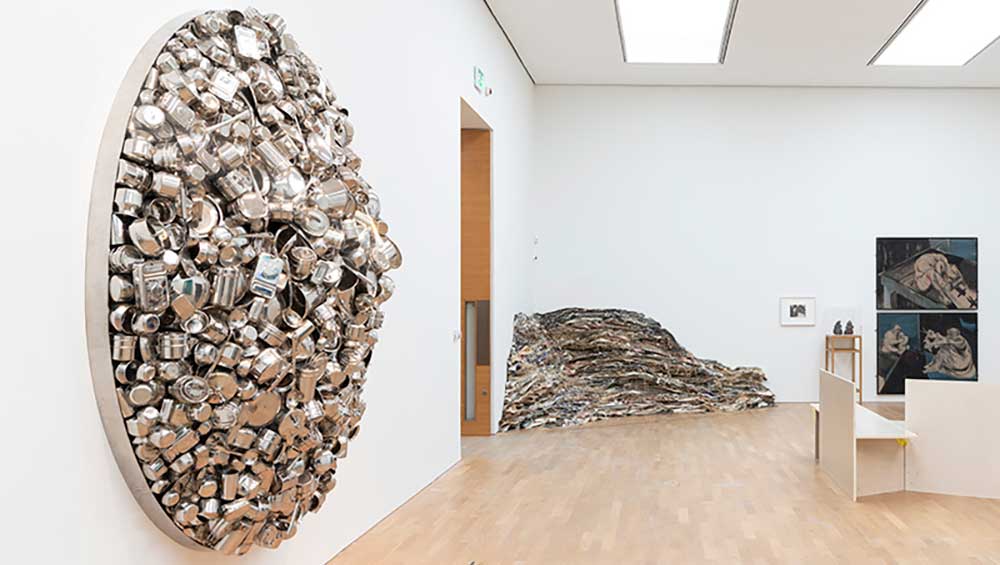
Deep Horizons at MIMA in partnership with the Roberts Institute of Art. Photo: Jason Hynes.
Middlesbrough Institute of Modern Art
10 March – 18 June 2023
by BETH WILLIAMSON
There is something exceptional about Middlesbrough Institute of Modern Art (MIMA). This contemporary art gallery with its own extensive collection is set at the heart of the town in more ways than one. Not only is it located in the centre of Middlesbrough geographically, but its community programme is central to its ethos and ethics, and that plays out in productive ways in this exhibition. Deep Horizons has as an overarching theme of excavation, whether that be geological and land excavation, or mining the mind and dreams, or getting inside history and time, or uncovering the archives and the museum itself. It unearths established modes of curatorial practice, too, one of the most innovative and impressive aspects of the exhibition.
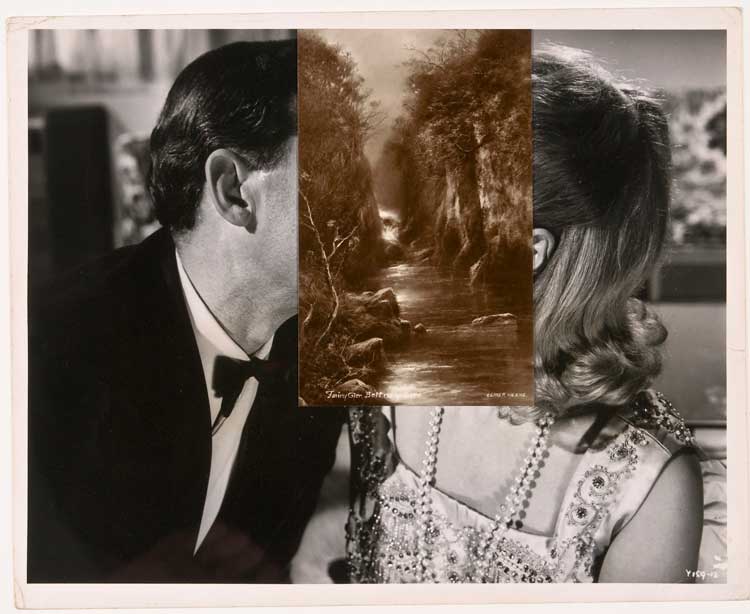
John Stezaker. Pair III, 2007. Collage, 20.5 x 25 cm. © The Artist. Photo: FXP photography.
This is a collaboration between MIMA and the Roberts Institute of Art (RIA) and their (very different) collections, but it is also more than that. It engages curatorial collaborators from myriad fields of expertise, providing rich interpretive materials that share their diverse voices and perspectives – each collaborator chose a work or group of works to reflect on and interpret. The beauty and the benefit of this multimodal approach is precisely that variety, which perfectly suits the extensive array of artworks on display, enabling sometimes forgotten or overlooked narratives and voices to surface afresh.
The external curatorial collaborators come from a variety of backgrounds, so it is not surprising to learn that they approach the exhibition and the artworks differently. That is why they have been asked to participate, after all. Tony Robinson, presenter of the TV programmes Time Team and Museum of Us, has a passion for history. For this exhibition, he reflected on Martin Creed’s Work No 180 Largo, larghetto, adagio, andante, moderato, allegro, presto e prestissimo (1995-2004), from the RIA collection. Robinson’s interests connect well to Creed’s work, marking time.
For her part, artist Liliane Lijn reflected on Dora García’s It is not the past, but the future, that determines the present (2005-08), Man Ray’s Le Gant Perdu (The Lost Glove) (1967-68) and Raphael Hefti’s Subtraction As Addition (2013), all from the RIA collection. Lijn’s understanding of materials, and curiosity about cosmology, energy and human life, are evidenced in her reflections that bring art and science into close quarters in works such as Hefti’s, made from Luxar-coated glass pushed to its technological limits.
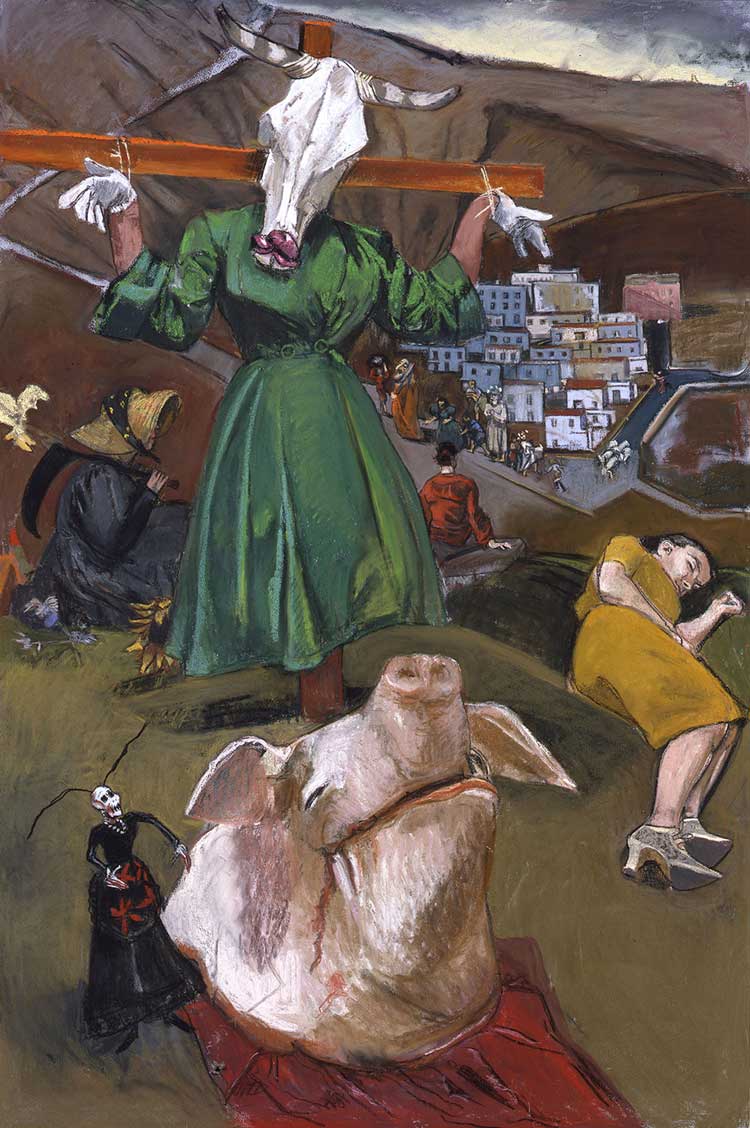
Paula Rego. Scarecrow and the Pig, 2005. Pastel on board, 180 x 120 cm. © Ostrich Arts Ltd. Courtesy Ostrich Arts Ltd and Victoria Miro.
There are reflections, too, from writer and researcher Julietta Singh, ethnobotanist Greg Kenicer, artist Fiona Crisp, physicist Chamkaur Ghag, and Geoff Taylor, a former Tees Bay pilot with unique local knowledge. Taylor reflected on a group of three photographic prints by Robin Dale, held in the MIMA collection and featuring local kiln chimneys and mines from the 1970s. Taylor’s local knowledge and memories are shared through the works and his reflections and interpretation of them.
One of the first things you notice at this exhibition is Martin Creed’s Work No 180. In fact, it is impossible to miss, located as it is, just as you enter the space with its noisy, two-metre row of metronomes, each with a mechanical arm swinging repeatedly back and forth in the gallery. The work attracts visitors because of its sound, but also because of its high maintenance – each time an individual metronome stops, gallery staff must rush across to wind it up like an old clock. That hands-on attention elicits conversations, adding to opportunities for exchange and inclusion in a convivial gallery environment in which everyone seems to feel at home and welcomed. In this way, taking care of a row of mechanical metronomes perhaps becomes an allegory for MIMA and its community.
.jpg)
Chiara Camoni. SISTER 4, 2017. Clay, steel wire, candles, fire.
That relationship is transformational for the care and wellbeing of community, for creative pedagogy and for curation. This is just one part of the bigger picture at MIMA where, it might be said, the gallery is part of what artist Merel Visse and researcher Robert Stake have called a paradigm of care: “A paradigm is a sweeping, grand feeling, accepted widely by people. A care paradigm is an agreement that people, near and far, should be cared for, protected, treated with dignity and respect, nurtured, comforted and emboldened in spirit.”1 This seems to be how the MIMA community group, The Club, functions. A group for elders, age is no barrier to engaging with the artworks on display. This group has developed a particular affinity for Chiara Camoni’s work Sister 1 (2017). Lighting a candle on this work was an emotional experience for one member of The Club the day I visited, something that returns me to the ethics of this collaborative exhibition and the foundational thinking of MIMA and RIA as the two key collaborators.
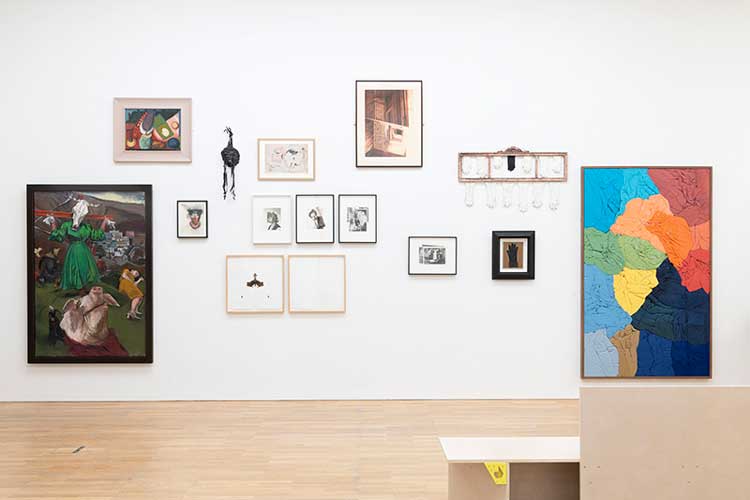
Deep Horizons at MIMA in partnership with the Roberts Institute of Art. Photo: Jason Hynes.
RIA’s ambitious goal is to develop new perspectives and insights on the David and Indré Roberts Collection, which comprises about 2,500 works of art by more than 850 artists dating from the mid-20th century to now. It shares the collection, shows it in new configurations and is committed to initiating conversations about how we engage with culture. The MIMA collection is rather different with 2,350 works of art and craft made by artists locally and internationally from the mid-1800s until now. It has roots in the century-old Middlesbrough Collection assembled in the 1920s by local artists. That collection grew under the care of three local galleries before coming together in its present form at MIMA in 2007, and continuing to grow. Like RIA, MIMA is dedicated to sharing the collections and conversations in new ways. Perhaps it is this shared commitment to engaging new audiences, initiating new conversations and valuing the co-creation of meaning that brought these two organisations together in the first place.
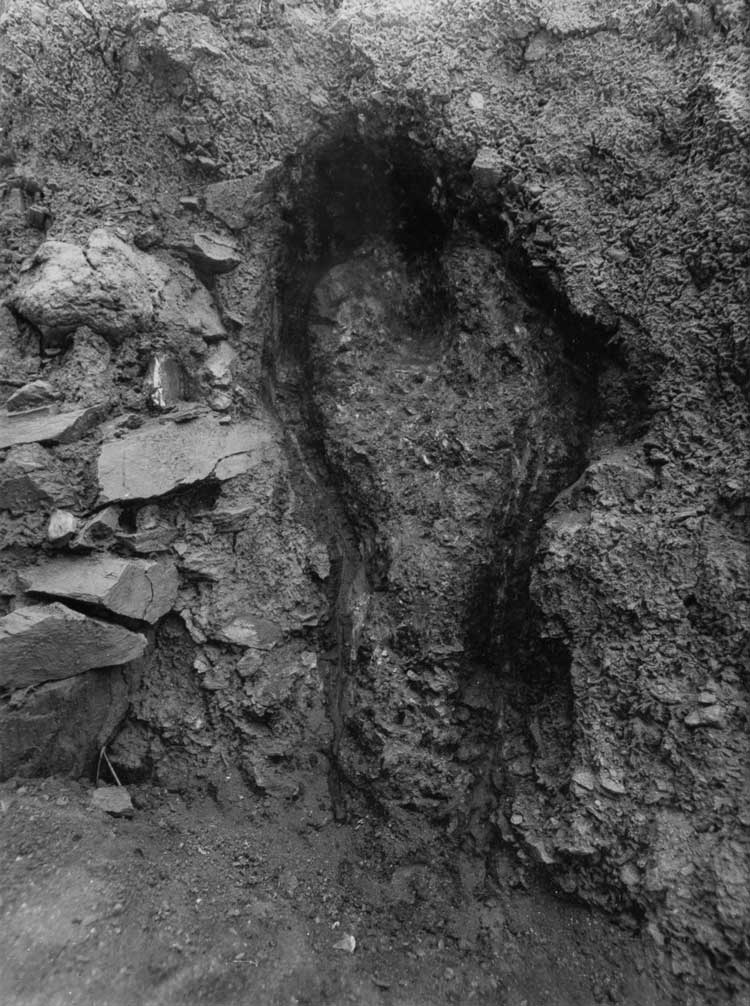
Ana Mendieta, Untitled, from the Silueta Series, 1980. Gelatin, silver paint.
One of the most affective works in this exhibition is Conrad Atkinson’s No Compensation (1977). The work takes the form of collage on 10 panels (remaining from an original 13), which document the daily life of Billy Hunter, an iron-ore miner from Cleator Moor, Cumbria. Using the excavation, purging, redaction and revealing of remnants of information, the work shares the contradictions of the story of Hunter, who was denied compensation despite having contracted a chest disease as a result of his job. Adjacent to this powerful sociopolitical exegesis of injustice, the exhibition curators have hung Onya McCausland’s painting Saltburn 54º34 07.37 N 0º57 42.87 W / No.8 (2021). On the face of it, this monochrome abstract could not be more different from Atkinson’s activism in No Compensation. Yet, it is part of McCausland’s continuing project working with the Coal Authority to collect and recycle the natural ochres found in the wastewater that runs through disused mines. Local communities are involved in using the recovered minerals to manufacture oil colours and emulsion paint. Through the artist’s research and artistic practice comes social change, echoing Atkinson’s work almost 50 years earlier.
.jpg)
Julian Stair. Monumental Jar V, 2018. Ceramic.
Atkinson and McCausland (politics half a century apart), the pots of Julian Stair and Edmund de Waal (the monumental and the modest), the material interrogations of Subodh Gupta and Hefti (steel and glass), the bodily explorations of Paula Rego and Man Ray (the body and the object), the residual trace of Teresa Margolles and Ana Mendieta (autopsy water and earth), the structures of Dale and Bernd and Hilla Becher (chimneys and water towers), the list goes on. The wonder of this exhibition it how it supports a multitude of voices and connections. Within MIMA’s gallery spaces, this meeting of its collection with RIA’s, the inclusion of curatorial collaborators and a series of associated activities across a spectrum of ages and interests makes for an exhibition that functions as a care-full anchor at the heart of a complex sustaining web for this community and beyond. It is a laudable achievement and a model for the present and the future.
Reference
1. A Paradigm of Care by Robert Stake and Merel Visse, published by Information Age Publishing, 2021, page 1.